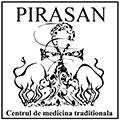Hepatitis is a disease of the liver, manifested by the inflammation and the lesion of the hepatic tissue. Unless treated properly, it causes cirrhosis or hepatic cancer.
Viral hepatitis occurs as a result of the infestation of the body by the hepatic virus of A, B, C, D or E type. In addition to the viruses specific to each type of viral hepatitis, it may also be caused by adenoviruses, Cytomegalovirus, Herpes Simplex, and Epstein-Barr as well as by the yellow fever virus.
Non-viral hepatitis is caused by toxins, alcohol, drugs, by autoimmune processes, by other infections already present in the body or by certain medication improperly administered (such as amoxicillin, paracetamol, tuberculosis medication, hormone based contraceptives, ibuprofen and indomethacin etc.).
According to the duration and the intensity of the symptoms, hepatitis may be acute (when it lasts less than 6 months) or chronic (it lasts longer than 6 months).
Main Types of Hepatitis
Hepatitis A: caused by infestation by HVA virus; it has an acute character; it does not become chronic and it lasts from several weeks to several months. The incubation period is 2-6 weeks. After infestation and recovery, the body develops auto-immunity. The HVA virus is transmitted by contact with infested feces, by consumption of infested foods and drinks, by touching persons who came in contact with the pathogen virus (especially under conditions of poor hygiene). In some particular situations, it may also be transmitted by sexual intercourse and blood transfusions.
Hepatitis B: caused by the infestation by HVB virus, especially in childhood. It has both an acute and a chronic character. It may manifest as a not so serious disease or as a long-lasting disease. In the latter case there is a risk of hepatic cancer and of cirrhosis. The virus remains active for years on end even under extreme conditions. Therefore it may be transmitted by the HVB virus carriers at anytime by infected blood, sperm or other body fluids and by sexual intercourse. The virus may also be contracted by contaminated syringe needles used in injecting drugs or by infected tattooing tools. The fetus is contaminated during pregnancy only if the mother-fetus barrier was affected. However, there is the risk of infestation during childbirth.
Hepatitis C: caused by the infestation by the HVC virus. It is transmitted by contact with infected blood, blood transfusions, sexual intercourse when there are lesions in the genital organs or by infected objects (such as medical tools improperly sterilized, syringe needles used in drug administration, piercing, tattooing tools). The manifestations may be asymptomatic, as the disease bears a chronic character, although its onset may be accompanied by an acute episode. Later, there may occur such complications as: hepatic fibrosis, cirrhosis, hepatic failure and hepatic cancer. No vaccine has been developed for this type of hepatitis yet. The onset of the disease is accompanied by diminished appetite, abdominal discomfort, nausea and vomiting, fever and fatigue. In serious condition, jaundice also occurs (yet in a lower percentage than in the case of B hepatitis).
Other types of hepatitis comprise: alcoholic hepatitis, autoimmune hepatitis, D and E hepatitis, toxic hepatitis.
Symptomatology
Hepatitis is asymptomatic in a great number of cases, especially in the chronic stages or as far as children and youth are concerned. Because of that, the diagnosis may be established by associating the results of the anamnesis with the results of the blood analyses (hepatitis antibodies, transaminase values etc.). The jaundice sets in when there are already major hepatic lesions. Some of the symptoms are: low fever, distension, retention of liquids, discomfort or abdominal pains caused by liver and spleen growth. The women diagnosed with autoimmune hepatitis also suffer from acne, pulmonary lesions, thyroid and kidneys inflammation, menstrual disorders.
The manifestation of the acute hepatitis comprise: general indisposition, abdominal discomfort, muscle and articular pains, nausea and vomiting, fever, diarrhea or light-colored stool, headaches, diminished appetite, dark-colored urine, jaundice (skin and mucous membrane coloration by biliary pigments).
Treatment
By acupuncture procedures in association with administration of herb hidroalcoholic extracts, it is obtained a self-cloning process of the hepatic cells, starting from cells situated in a non-infested area of the liver.
Each organ recovers its cellular structure within a certain span of time. Using the genetic information of the healthy hepatic cells in the regeneration process, the newly-formed cells will no longer carry the hepatic virus. The already infested ones are removed from the body. The treatment also includes a diet, not a very drastic one, though. It is compulsory to follow a daily rest schedule. The impact of stress and nervousness are reduced by teaching the patient certain methods of psychic self-control.

